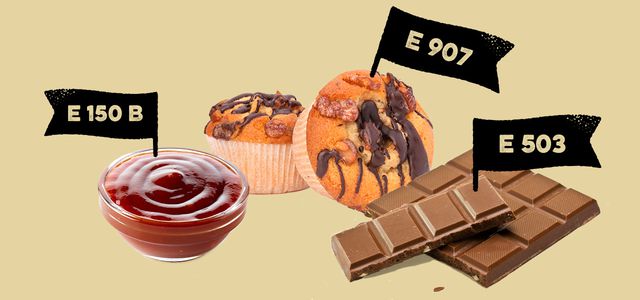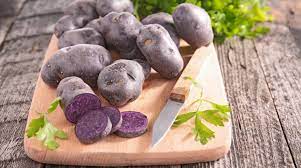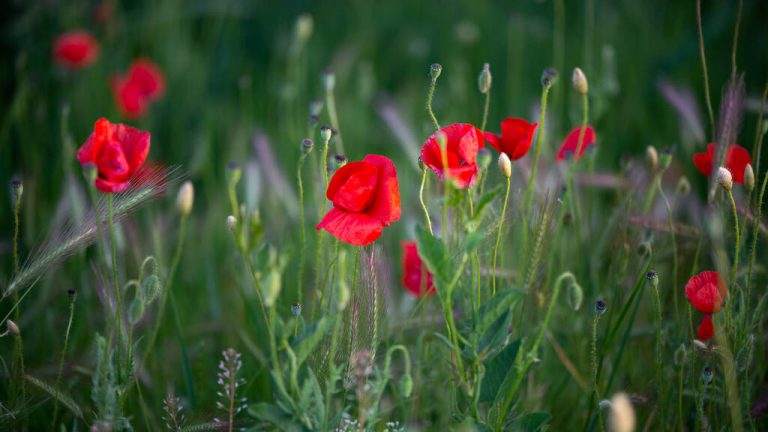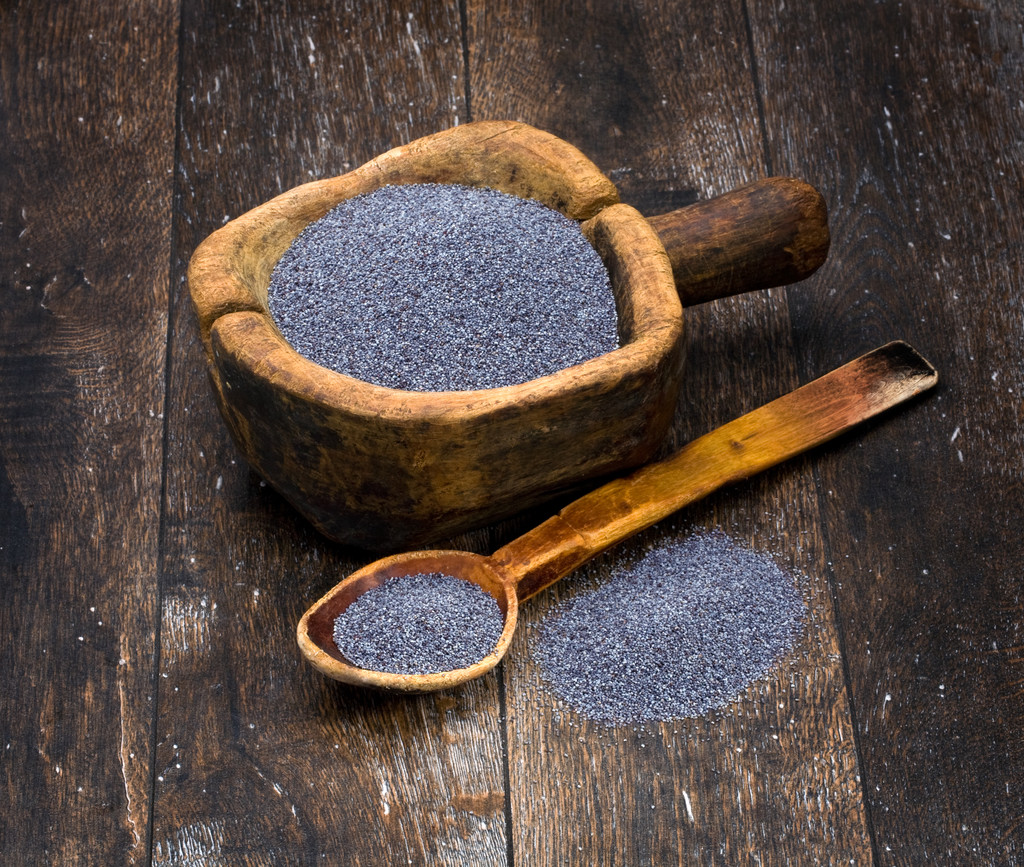E numbers do not have a particularly good reputation. In fact, some of the food additives can cause problems. But not all E numbers can be lumped together, because there are also food additives that are completely harmless.
We usually associate bad things with E numbers and additives. The food industry uses them to change product properties and, for example, to make food last longer, which makes storage and transport easier.
Another frequent purpose of additives: The product should be “improved” optically or in taste by flavor enhancers and colorings. But E numbers are not all the same: while you should avoid some E numbers because they are suspected of triggering allergies, for example, there are others that you should be able to eat without hesitation.
What does the E in E number mean?

E-number is actually just another name for food additives that are approved in the EU – the “E” in “E-number” stands for “Europe”. Interesting: Up until 1993, only 265 E numbers were permitted in Germany. Alignment with EU legislation has meant that over 300 different food additives can now be used.
There are many different additives that are supposed to fulfill very different functions in food:
Antioxidants: prevent fats from going rancid and ensure longer shelf life.
Emulsifiers: combine substances that normally do not mix together, such as oil and water.
Dyes: make food more colorful and bright.
Thickeners: ensure the desired consistency of pudding or ice cream, for example.
Flavor enhancers: spice up the taste.
Preservatives: inhibit microorganisms and ensure a longer shelf life.
Sugar substitutes: used as a sugar substitute.
E-Numbers: Health assessment based on the ADI value
Extensive tests are carried out before an E number is approved. The so-called ADI value is determined: It describes the amount of an additive that a person can eat every day throughout their life without endangering their health.
The ADI value (acceptable daily intake = tolerable daily intake) is given in milligrams per kilogram of body weight and is usually determined by feeding experiments on animals. Because these results cannot be directly transferred to humans, the value from animal experiments is usually divided by 100 – so that only about one percent of the amount that was harmless to animals is permitted for humans.
At first that sounds like a safe, although unfortunately not animal-free, procedure. Nevertheless, not every health risk for humans can be ruled out in this way: For example, there can be interactions with medication, some people are particularly sensitive due to allergies, and with a very unbalanced diet, the ADI value can be reached or even exceeded. With some E-numbers, such health hazards are more likely – you should therefore avoid them.
The “good” E numbers
But not all E numbers are problematic: the consumer advice centers have evaluated all food additives to determine whether they pose a potential risk to health. The consumer advocates came up with a total of 153 harmless E numbers. So far, there are no indications of any health hazards associated with these additives.
In some cases this is not very surprising: Additives such as vegetable charcoal (E 153), carbonic acid (E 290), vitamin C (ascorbic acid, E 300), locust bean gum (E 410) and beeswax (E 901) sound harmless – and they are. With other E-numbers, one might think at first glance that they are not good for us, but in reality they pose no risk.
That doesn’t mean we recommend cramming tons of these additives into your diet, though – generally speaking, the less processed a food is, the better.
9 additives without risk
From the 153 E numbers that are considered harmless, we have selected nine particularly interesting additives, which we would like to introduce to you in more detail below.
E 131 patent blue V
Patent Blue V is – as the name suggests – a blue dye. Because of its strong color, patent blue V is mainly used as a coloring for fruit gums, glazes and beverages (keyword Blue Curaçao). The E number can hardly be absorbed in the stomach and intestines, the additive is largely excreted undigested and is therefore considered harmless to health.
E 150 B Sulphite caustic caramel
Caustic Sulfite Caramel is a plant-based brown colorant made through the use of lye and sulfur compounds. Caustic sulphite caramel is used to color alcoholic beverages such as whiskey and beer and foods such as sausages, cola, jams, condiments or sweets. However, the dye may not be used in organic foods, at least not as long as it is only used for coloring.
E 297 Fumaric acid
The E number is an acidifier found in every living cell. It is used for dry products such as custard powder, instant tea powder and confectionery production. The ADI value of fumaric acid is 6 mg/kg body weight, and there are also maximum amounts for certain foods: a maximum of 4 grams of fumaric acid is permitted per kilogram of pudding powder, and a maximum of one gram for instant powder for teas and fruit drinks.
E 356 sodium adipate
Sodium adipate is an acidulant and flavor enhancer with a salty taste. The food additive is used in convenience products such as baked goods, jelly desserts, and powdered drinks. Its ADI value is 0 to 5 mg/kg body weight and a maximum of 10 grams per kilogram can be used depending on the product. So far there are no indications of possible health hazards from E 356.
E 503 ammonium bicarbonate
This food additive is counted among the raising agents, release agents and acidity regulators – you may know it as “stag horn salt” from baking gingerbread. The E number is used in particular for baking powder and can be found in chocolate, cocoa products and coffee substitute products. There is no ADI value and no maximum quantity restriction for E 503, but the quantity specification applies quantum satis (“as much as necessary”): This means that the E number in a food is only added as much as necessary and as little as possible may be.
E 513 sulfuric acid
Sulfuric acid is an acidulant used in the production of spices, cheese and sugar syrup. The E number is also approved for organic products, there are no health concerns. As with the E number E 503, the quantity quantum satis applies to sulfuric acid: as much as necessary, as little as possible. Theoretically, the concentrated acid could lead to the destruction of body tissue – but such acidity does not occur in food.
E 586 4-hexylresorcinol
4-Hexylresorcinol is a color stabilizer that prevents crustaceans from turning brown. The E-number is only approved for crustaceans: Shortly after catching crustaceans, black spots can form – regardless of whether they are fresh, chilled or frozen crustaceans. This discoloration is neither harmful to health nor does it affect the quality of the marine life, but many people judge the discoloration negatively. 4-Hexylresorcinol inhibits the enzyme responsible for discoloration. Although the E number is considered harmless to health, frequent consumption is not recommended.
E 907 Hydrogenated poly-1-decene
Hydrogenated poly-1-decene is a separating and coating agent for confectionery and dried fruit. The E number is also used in the baked goods industry, where the substance ensures that cakes and bread can be removed from the mold after baking. In this case, hydrogenated poly-1-decene is considered a processing aid and not an additive and therefore does not have to be declared on the list of ingredients of the food. The maximum amount of the substance is limited to 2 g/kg and its ADI is set to 6 mg/kg body weight.
E 1505 triethyl citrate
This food additive is a carrier that is only approved for egg white powder and flavorings. It ensures that the aromas are distributed in the food and that the egg white can be whipped again if some egg yolk has gotten into it during mechanical separation. Although the E number is considered harmless to health, there are concerns among people with mold allergies.
Harmless E numbers: conclusion
Although all the additives mentioned – and many more – are classified as harmless, none of the E numbers mentioned sound particularly appetizing. The problem also applies to E numbers that are harmless to health: They are used in particular for (highly) processed foods – foods that we should generally avoid if we want to do something good for our health.
That’s why the Utopia conclusion is: It’s always worth looking at the packaging. If you lose your appetite just reading the synopsis, you should look for alternatives. As a Utopia reader, I hope you know that there are more than enough of them!








